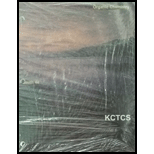
Concept explainers
(a)
Interpretation: All possible constitutional isomers formed by dehydrohalogenation of given
Concept introduction: Constitutional isomers or structural isomers have the same molecular formula but they differ in the way their bonds are arranged. They also have different properties.
(b)
Interpretation: All possible constitutional isomers formed by dehydrohalogenation of given alkyl halide is to be drawn.
Concept introduction: Constitutional isomers or structural isomers have the same molecular formula but they differ in the way their bonds are arranged. This makes them have different properties.
(c)
Interpretation: All possible constitutional isomers formed by dehydrohalogenation of given alkyl halide is to be drawn.
Concept introduction: Constitutional isomers or structural isomers have the same molecular formula but they differ in the way their bonds are arranged. This makes them have different properties.
(d)
Interpretation: All possible constitutional isomers formed by dehydrohalogenation of given alkyl halide is to be drawn.
Concept introduction: Constitutional isomers or structural isomers have the same molecular formula but they differ in the way their bonds are arranged. This makes them have different properties.
Want to see the full answer?
Check out a sample textbook solution
Chapter 8 Solutions
KCTCS Organic Chemistry Value Edition (Looseleaf) - Text Only
 Organic Chemistry: A Guided InquiryChemistryISBN:9780618974122Author:Andrei StraumanisPublisher:Cengage Learning
Organic Chemistry: A Guided InquiryChemistryISBN:9780618974122Author:Andrei StraumanisPublisher:Cengage Learning
